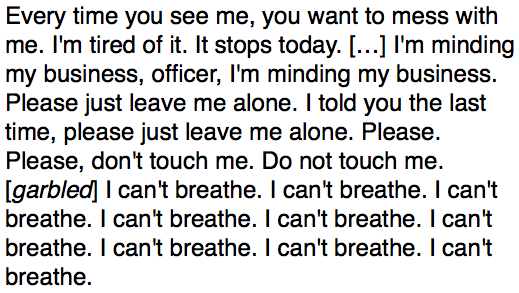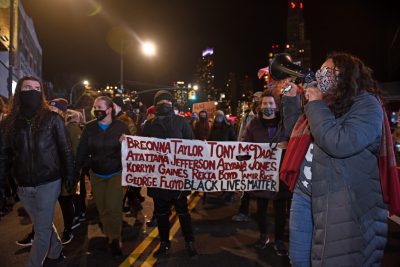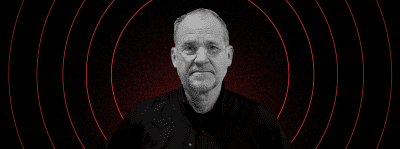“We. Can’t. Breathe.”: The Reality of Two New Yorks Has Never Been More Apparent
Last night, just hours after a grand jury’s decision not to indict police office Daniel Pantaleo as criminally culpable in the death of Eric Garner, hundreds of New Yorkers took to the streets in protest. They flooded Times Square, they staged a “die-in” in Grand Central Station, they shut down the West Side Highway. One of the initial, intended destinations of the marchers was the Christmas tree lighting at Rockefeller Plaza, a packed-with-tourists event whose national broadcast on NBC is a prime example of how one kind of New York gets packaged and sold to the moneyed masses. It is understandable that protestors would target it as being a place where they could make an impact, where the illusion of New York as being nothing more than Midtown-for-Midwesterners could be shattered, if only for a little while. And so, of course, there was probably no other place in New York as well protected as Rockefeller Center last night. Police—accidentally aided by clueless tourists who were heard to wonder if these protests had “anything to do with that Ferguson boy”—managed to deflect the protestors, who continued on up- and across town. So the tree lighting went on, and if you turned it on for a few minutes, like I did, to see if there would be any recognition of what was going on just a couple blocks away, all you got to see was Hootie singing “White Christmas.”*
When Bill de Blasio ran for mayor last year, he ran on a platform of there being “two New Yorks.” Many New Yorkers saw this as a divisive strategy, as well as being pessimistic. This morning de Blasio—who spoke more powerfully about the travesty of the grand jury decision than he has about anything else in his tenure as mayor thus far—went on Hot97 to talk about the Garner case. (By the way, if you Google whether Bloomberg ever appeared on Hot97, Google just laughs at you, basically.) De Blasio spoke about many things—how police body cameras will be implemented as soon as this Friday; how he “literally could not imagine” how he could continue to live if he lost his son, Dante; how the Garner case isn’t over yet because it’s “bigger than Staten Island;” and how “we’re living in a tale of two cities in many ways.”
The return to this line of thinking is essential, and not just for politicians, but for the whole city. Many of us pride ourselves as New Yorkers for being more enlightened, more aware than people in other parts of the country. There is an undeniable sense of superiority attached to the way many New Yorkers have talked about the murders of Trayvon Martin and Mike Brown because those killings happened in Florida and Missouri. Even now, with Eric Garner, it’s been noted that the grand jury verdict isn’t all that surprising because it was rendered in Staten Island, which, you know, isn’t really “New York” at all.
But, of course, Staten Island is New York. That grand jury decision would probably have been identical anywhere else in this city and anywhere else in this country. We operate under a system that protects those already in power, like Officer Pantaleo, while persecuting those who question authority—Ramsey Orta, the man who filmed Eric Garner’s death, was indicted by a grand jury for weapons charges after an undercover police raid not long after Garner’s death. But Garner’s death and the ongoing targeting of minority males by police (which has dramatically gone down under de Blasio and Bratton’s tenure, though not disappeared entirely) is just one aspect of the rampant inequality that exists in New York. This inequality is present in everything from the enormous income disparity which frequently falls along racial and ethnic lines to the fact that we have the most segregated public school system in the country. What kind of city can consider itself to be a truly liberal place when its educational system is divided—intentionally or not—along racial lines?
Eric Garner’s last words were “I can’t breathe.” Last night, protestors chanted over and over again: “I. Can’t. Breathe… I. Can’t. Breathe… I. Can’t. Breathe.” Eventually, the chant changed: “We. Can’t. Breathe.” The importance of recognizing that if one man’s life can be deemed so worthless that his killer does not even have to go to trial—despite the fact that the death was filmed—should be clear. But this case is about more than the abhorrent killing of one man. It is about the fact that if the most vulnerable members of our society are under attack, we all are. If one man can’t breathe, we are all struggling for air, whether we know it or not. Before he struggled for air, before he lay handcuffed and dying in the streets, receiving no medical attention despite the presence of medics, Eric Garner said, “It stops today.” Problems this systemic, this foundational, never stop in a day. But what we can do today is stop denying that this kind of thing can and will continue to happen not just in places like Florida or Ferguson, but in New York too. This—not a Christmas pageant put on for tourists—is our reality, and any refusal to admit that? In the words of Eric Garner: “It stops today.”
*At the end of the broadcast, NBC acknowledged that “It’s been a day of protests, in some cases, even close to where we’re broadcasting…”
[metaslider id=26662]
Follow Kristin Iversen on twitter @kmiversen
You might also like 





















